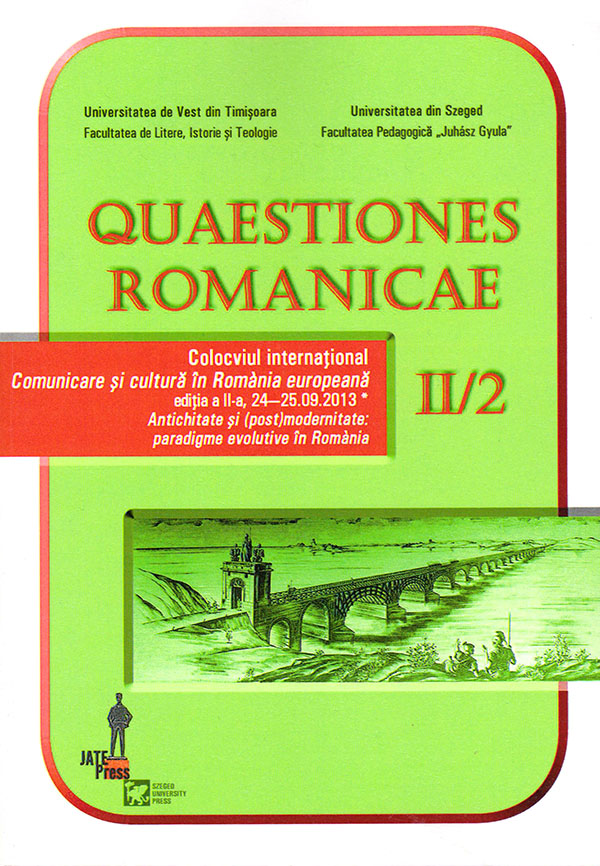Des repères mythologiques dans Phèdre de Racine. Pour un chronotope théâtral
Abstract: (On Mythological Key-elements in Racine’s Phaedra. Towards a Theatrical Chronotope) Our study of Racine`s most famous play, Phaedra, has as a starting point the mythological references as well as pretexts and paratexts in order for us to take into discussion the chronotope of the text. The chronotopic approach of a text is based on the study of the time and the space of the narration, regardless of its genre: epic or dramatic. In the French classical theatre, the plays respected the rule of the three unities: unity of time, of place and of action. We have identified in the play taken into discussion five types of time and four types of space through which the unity of time, respectively, of place are illustrated. In our analysis we have followed and described in detail the mythological, historical and religious irradiations of such a chronotopic construction.
Keywords: Phaedra, mythologie, Thesee, theatrical chronotope, racinian text.
Résumé: Notre étude sur la pièce la plus connue de Racine, Phèdre, a pour point de départ les repères mythologiques en tant que prétextes et paratextes afin de prendre en discussion le chronotope du texte. La démarche chronotopique d’un texte repose sur l’étude du temps et de l’espace de la narration, quel que soit le genre littéraire : épique ou dramatique. Dans le théâtre classique français les pièces respectaient la règle des trois unités : l’unité de temps, l’unité de lieu et l’unité d’action. Dans la pièce prise en discussion nous avons identifié cinq types de temps et quatre types d’espace par l’intermédiaire desquels le dramaturge illustre l’unité de temps et, respectivement, l’unité de lieu. Dans notre analyse nous avons suivi et détaillé les irradiations mythologiques, historiques et religieuses d’une telle construction chronotopique.
Mots clés : texte racinien, Phèdre, Thésée, chronotope théâtral, mythologie.
